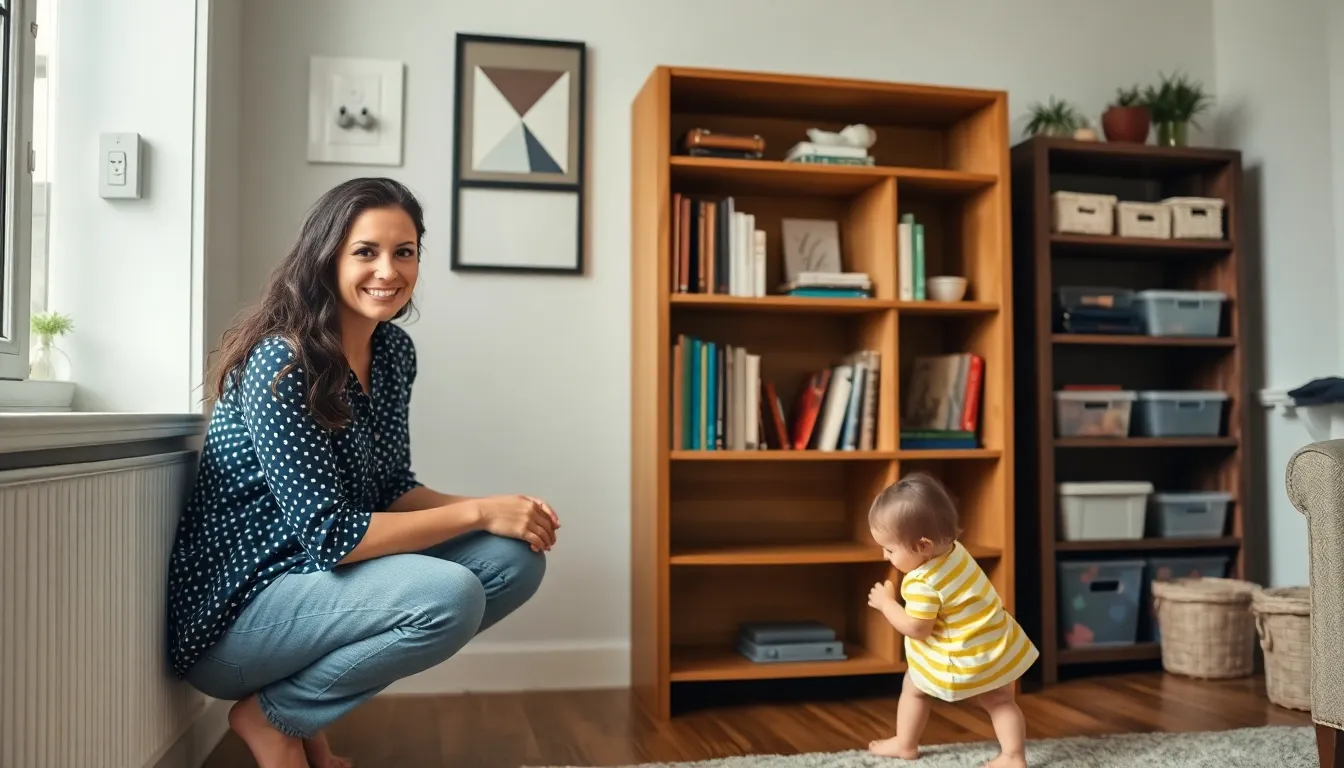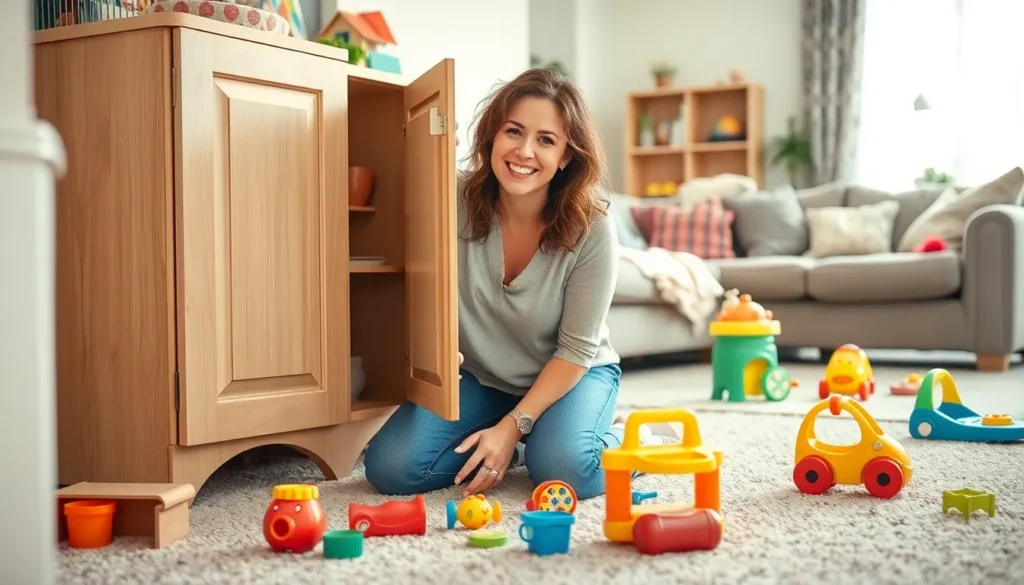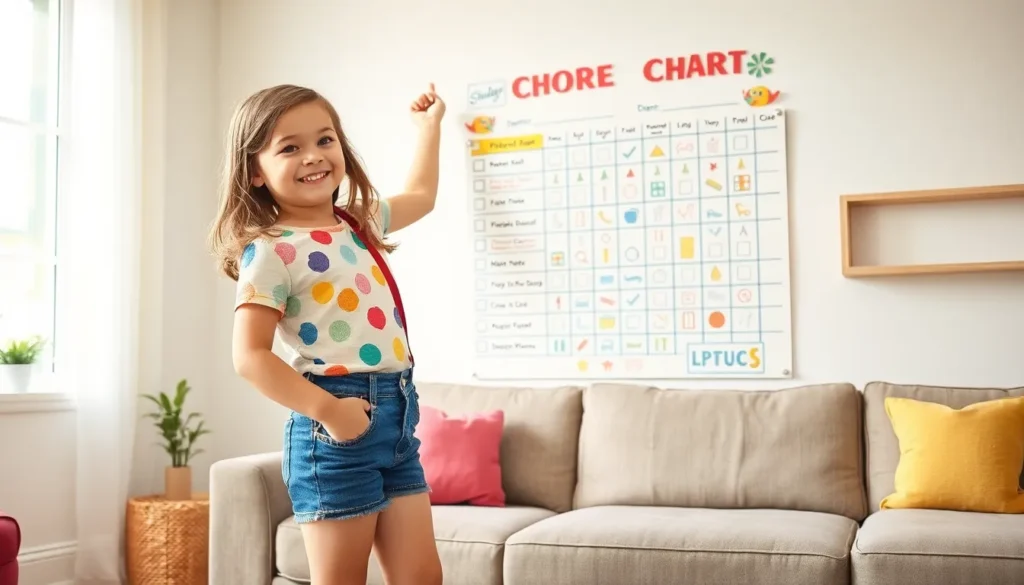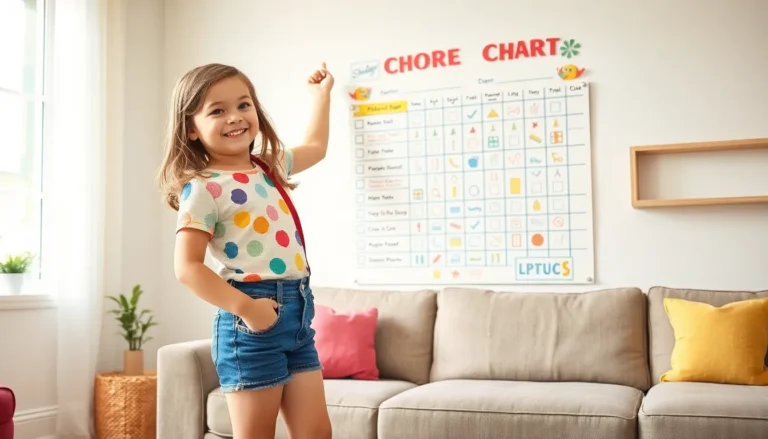Table of Contents
ToggleWelcoming a little one into the world is like inviting a tiny tornado into your home. Suddenly, everyday items transform into potential hazards, and your once peaceful abode feels like a chaotic playground. Fear not! With a few clever babyproofing tips, parents can turn their homes into safe havens without losing their sanity—or their sense of humor.
Understanding Babyproofing
Creating a safe environment for babies involves proactive measures known as babyproofing. Parents must identify potential hazards and eliminate risks to ensure their little ones explore their surroundings safely.
What Is Babyproofing?
Babyproofing refers to the process of making home spaces safe for infants and toddlers. This may include securing cabinets with childproof locks, covering electrical outlets with safety caps, and placing gates at the top and bottom of stairs. Parents often install corner guards on furniture to soften sharp edges. It’s vital to assess rooms regularly for new dangers as children grow and develop.
Why Is It Important?
Safety concerns rank high for parents of young children. Statistics show that accidental injuries remain a leading cause of childhood hospitalization. Accidents can happen quickly, whether from choking on small objects or falling from heights. By implementing babyproofing strategies, parents minimize risks and create a secure environment. Peace of mind increases when families know their little ones can explore while staying safe.
Essential Babyproofing Tips

Creating a safe environment for a baby requires careful planning and proactive measures. Parents can implement several essential tips to reduce risks and enhance safety at home.
Securing Furniture and Appliances
Start by anchoring heavy furniture like bookshelves, dressers, and cabinets to the wall. This step prevents tipping, especially in areas where children might pull on them. Utilize anti-tip devices to ensure furniture remains stable. Locking appliances such as ovens and refrigerators also blocks access to potential hazards. Assess the layout of each room regularly, recognizing that as children grow, their risk levels change. Keep sharp corners of furniture covered with protective padding. Placing non-slip mats under rugs helps maintain their position, reducing tripping hazards.
Outlet Safety Measures
Covering electrical outlets with childproof covers offers a simple yet effective deterrent. Install tamper-resistant outlets or sliding cover mechanisms for added safety. Outlets located near the floor can pose significant risks, so keeping furniture in front of them limits access. Avoid overloading outlets with multiple plugs to reduce fire hazards. Educating older children about outlet safety reinforces awareness as they grow. Checking outlets regularly for wear or damage keeps them safe for household use.
Safe Storage Solutions
Storing hazardous materials like cleaning supplies and medications in high cabinets eliminates access for small hands. Childproof locks on cabinet doors secure these storage areas effectively. Selecting bins with tight-fitting lids offers additional safety for toys and small items while discouraging choking hazards. Keep frequently used items in lower drawers that are safe and age-appropriate. Maintaining an organized space encourages both safety and play areas to remain accessible yet secure for children. Regularly reviewing storage solutions ensures they remain effective as the child grows.
Babyproofing Every Room
Creating a safe environment throughout the home benefits both parents and children. Each room requires unique considerations to minimize hazards.
The Living Room
Secure heavy furniture to the wall to prevent tipping. Use corner guards on sharp edges to protect little ones from injuries. Store breakables out of reach, and ensure that small items can’t become choking hazards. Keep cords from electronics hidden or secured. Cover electrical outlets with childproof caps to prevent electrical shocks. Regularly inspect the area for any new potential dangers.
The Kitchen
Childproof locks on cabinets safeguard cleaning supplies and sharp objects. Store knives and small appliances high, out of reach. Use stove knob covers to prevent little hands from turning on burners. Keep food items, especially choking hazards, in secure containers. Install safety gates to limit access when busy cooking. Maintain an organized counter space to reduce risks of spills and accidents.
The Bathroom
Install a toilet lock to prevent drowning incidents. Store medications and personal care products in high cabinets with childproof locks. Use non-slip mats to reduce the chance of slips in wet areas. Regularly check bathwater temperature before bathing to prevent burns. Keep electrical appliances like hairdryers out of reach and unplugged when not in use. Maintain cleanliness to ensure no hazardous items are left accessible.
Common Babyproofing Mistakes
Parents often commit mistakes during the babyproofing process, which can compromise a child’s safety. Being aware of these pitfalls helps to create a safer environment for little ones.
Overlooking Small Hazards
Small items can pose significant risks to infants and toddlers. Toys with small parts, coins, and even buttons can all lead to choking dangers. Ensuring that all small items stay out of reach is crucial. Regularly scanning the floor and low tables for misplaced objects keeps those potential hazards at bay. It helps to utilize storage solutions to organize toys and other small belongings effectively. Additionally, parents should check drawers and bags that young children might access for overlooked items.
Failing to Update Safety Measures
Safety measures require regular updates as children grow and explore their surroundings. New hazards may arise as they become mobile. For instance, a secured cabinet might become accessible to a curious toddler. Assessing babyproofing measures every few months ensures ongoing effectiveness. Adding new safety devices as necessary reduces risks associated with changing child behaviors. Transitioning from baby gates to toddler-friendly options can also reflect growth and development. Proactive adjustments keep the environment safe, fostering a secure space for exploration.
Creating a safe environment for a baby requires ongoing effort and attention. Parents can navigate the challenges of babyproofing by remaining proactive and adaptable. Regular assessments of their home help identify new hazards as children grow and explore.
By implementing practical safety measures in each room and staying organized, parents can minimize risks effectively. The journey of parenthood is filled with joy and surprises, and ensuring a secure space allows families to focus on creating cherished memories together. With the right babyproofing strategies in place, parents can embrace the adventure of raising their little ones with confidence.







